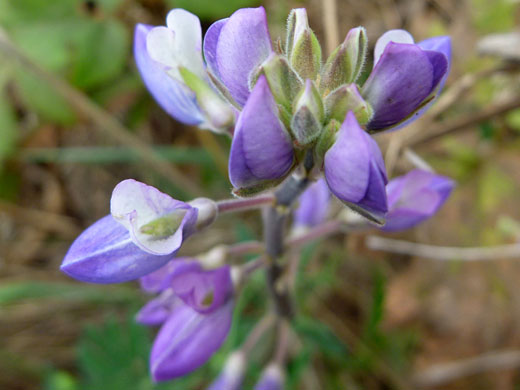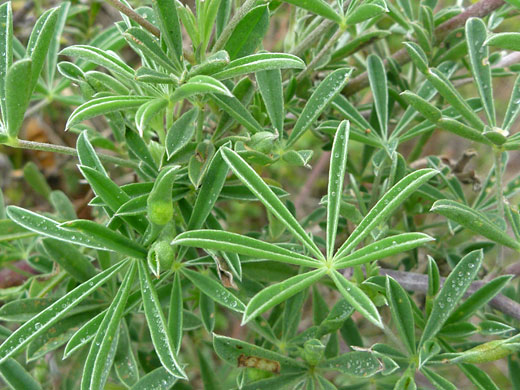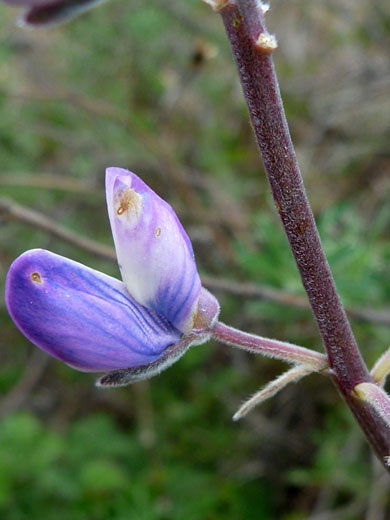Common names:
Dune lupine, Chamisso bush lupine
Family:
Scientific name:
Lupinus chamissonis
Main flower color:
Range:
California, all along the coast
Height:
Up to 6 feet
Habitat:
Coastal bluffs and sand dunes
Leaves:
Divided into between 5 and 9 narrow leaflets, each up to one inch long
Season:
March to August
Lupinus chamissonis (dune lupine) has a limited distribution, restricted to coastal areas of California, below 50 feet elevation. Leaves and stem are covered by short, silvery hairs, lying against the surface. Leaves grow mainly along the stems rather than at the base; they are palmately divided into narrow leaflets, usually folded along the axis.
Flowers form open or dense, elongated clusters on the upper part of the stem (up to seven inches); they are attached by pedicels about a quarter of an inch long, which have a similar-sized bract at the base. The upper calyx lobe is divided, the lower entire. Petals are purple to blue in color, with a white or pale yellow banner spot. The back of the banner is hairy. The upper margin of the keel petal is hairless, the lower hairy.
Flowers form open or dense, elongated clusters on the upper part of the stem (up to seven inches); they are attached by pedicels about a quarter of an inch long, which have a similar-sized bract at the base. The upper calyx lobe is divided, the lower entire. Petals are purple to blue in color, with a white or pale yellow banner spot. The back of the banner is hairy. The upper margin of the keel petal is hairless, the lower hairy.
All Contents © Copyright The American Southwest | Comments and Questions | Contribute | Site Map




